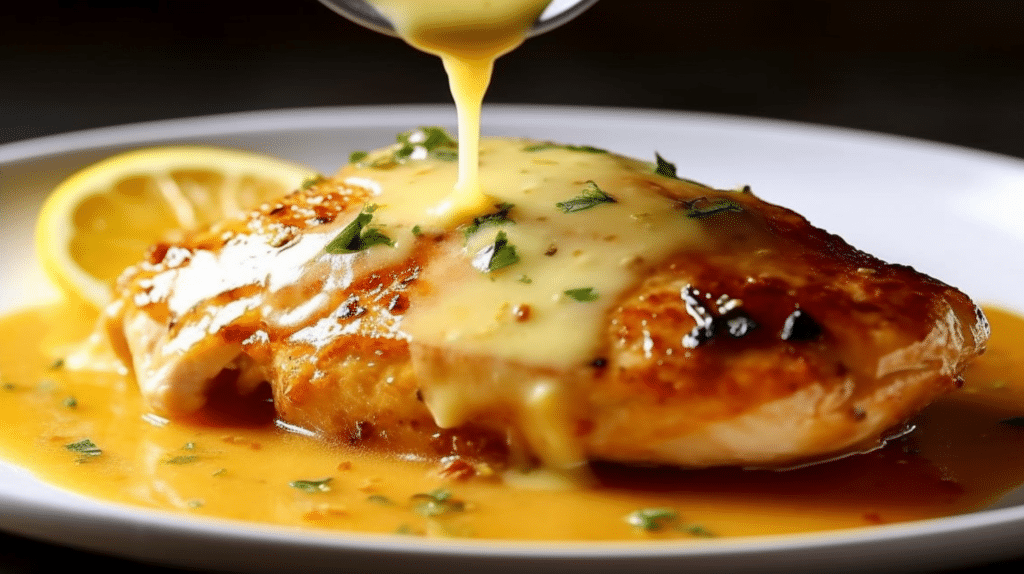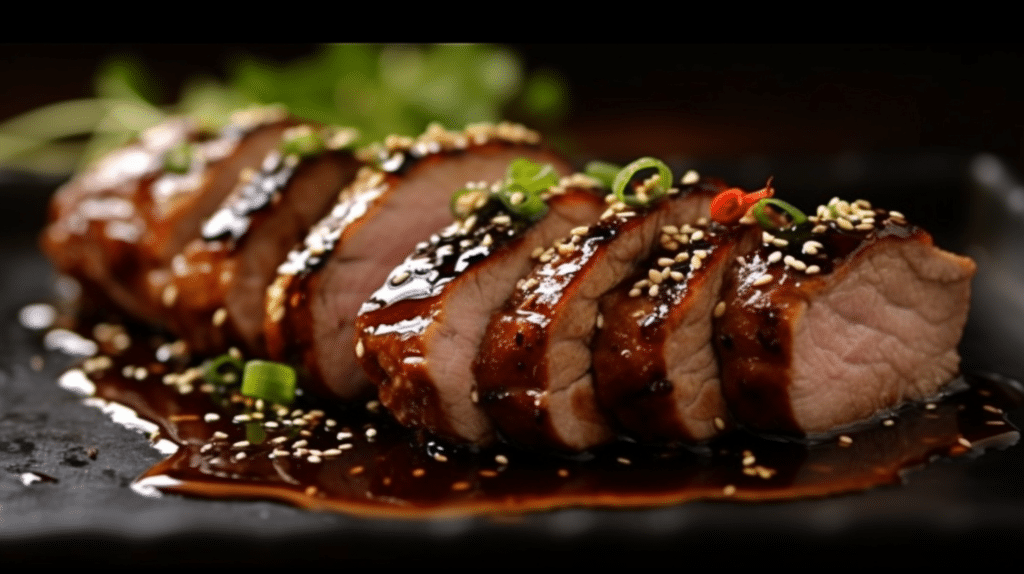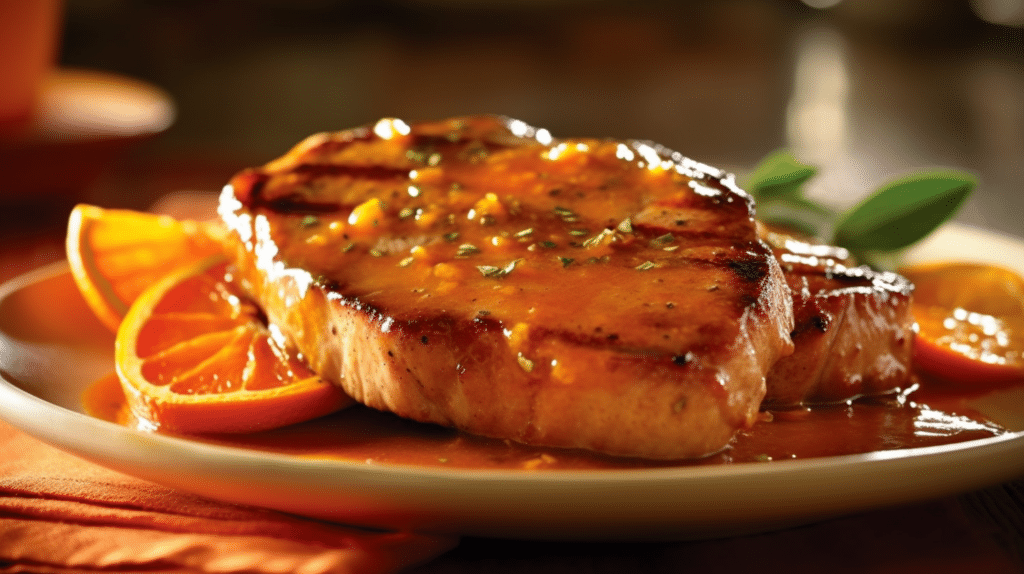
Sauces have the power to transform an ordinary meal into a culinary masterpiece, especially when expertly paired with different types of meat.
Understanding the art of sauce and protein pairing elevates your dining experience, as it incorporates flavor enhancement, texture harmony, and aesthetic appeal. In this blog post, we will delve into the essential characteristics that will help you select the best sauce and meat pairings—such as beef, chicken, pork, and fish—and what makes them complement each other so brilliantly.
Pairing the right sauce with meat can enhance flavor and create a more enjoyable dining experience, as specific types of meat require certain characteristics in sauces to pair well.
Mastering the art of protein and sauce pairing can elevate any meal, transforming even the simplest dish into a gourmet experience.
One way to achieve this perfect harmony is by considering the richness and texture of the meat in question. For instance, lean cuts like chicken breast or fish fillet often benefit from richer sauces with high fat content such as beurre blanc or hollandaise, adding moisture and decadence without overpowering their delicate flavors.

Conversely, hearty meats like beef or pork pair well with more robust sauces – think red wine reductions or tangy barbecue glazes – that can stand up to their intensity. Another useful tip for successful protein-sauce pairings: always pay attention to cooking techniques used for your chosen cut of meat.
Sauces require specific characteristics to pair well with different types of meat. Here are some key factors to consider when matching sauces with meat:
Understanding these key characteristics is essential in selecting a sauce that enhances the flavor of your preferred type of meat.
The flavor profile, texture, acidity level, heat level, and aroma are the key characteristics of sauces for meat pairings.
The flavor profile of a sauce plays a crucial role in determining its compatibility with different types of meat. Every type of meat has unique characteristics and flavors that need to be complemented or enhanced by the sauce.
For example, beef pairs well with sauces that have acidic notes like red wine reduction or tomato-based barbecue sauce while chicken goes nicely with cream-based sauces like béchamel or mushroom sauce.
When it comes to seafood, delicate fish may require subtle flavors like lemon butter sauce while stronger tasting fish may pair better with more robust flavors like Cajun seasoning or tartar sauce.
Overall, considering the flavor profiles of both the meat and the accompanying side dishes is essential for selecting an ideal sauce pairing that enhances your meal’s taste and appeal.
The texture and consistency of a sauce play an essential role in how well it pairs with different types of meat. A thicker, creamier sauce like hollandaise or aioli works better with firmer cuts of meat like steak or pork.
In contrast, thinner sauces like vinaigrettes pair well with lighter meats like chicken or fish.
Consistency is also crucial when pairing sauces with different cooking techniques. Sauces that are meant to be drizzled over meat need to be thin enough to pour easily but thick enough not to run off quickly.
Thick BBQ sauces work best on grilled meats as they tend not to slide off the surface during basting.
Acidity is an important characteristic to consider when pairing sauces with different types of meat. The level of acidity in a sauce can enhance the flavor profile of the meat, adding a tangy or sour note that complements its natural taste.
However, it’s important to be careful not to overdo it with acidity. Too much can overwhelm the flavors of the meat and turn off diners.
Some meats may require less acidity than others – for instance, pork pairs well with slightly sweeter sauces rather than overly acidic ones like vinegar-based BBQ sauce.
Another important characteristic that a sauce should have to pair well with different types of meat is its heat level. Heat can enhance or completely overpower the flavor of a dish, so it’s crucial to find the right balance for your palate.
It’s also essential to consider the spice tolerance of those who will be eating your food. Some people love flaming hot sauces while others may prefer milder options.
Furthermore, some spices go better with certain meats than others.
Overall, balancing spice and maintaining harmony between ingredients is key in finding the perfect sauce-meat match-up.
The aroma and aesthetic of a sauce are important factors in determining the success of pairing it with different types of meat. Aroma plays a critical role in this by impacting our perception of taste.
The smell of a sauce can either stimulate or suppress our appetite, and the right aroma can drastically enhance the overall dining experience. On the other hand, aesthetic is equally important as we eat with our eyes first.
A visually appealing meal stimulates saliva production and prepares us for optimal digestion.
For example, when serving grilled beef tenderloin with red wine reduction sauce, you should try matching it with thin slices of beautifully cooked vegetables or mushrooms that complement both look and flavor profiles.
Learn about the ideal sauce pairings for beef, chicken, pork, fish, and vegetables to enhance the flavor of your favorite dishes. Discover key characteristics to look for in sauces and gain tips on how to choose the right sauce based on cooking method, flavor profile of meat, and complementary side dishes.

Beef is a versatile meat that can be prepared in many ways, and different sauces can enhance its flavor. Here are some ideal sauce pairings for beef:
Knowing what characteristics to look for in a sauce when pairing it with different types of meat helps elevate any dish’s flavor profile giving an enjoyable dining experience to diners who appreciate technical expertise on food preparation and presentation.

Chicken is a versatile meat that can be cooked in various ways, such as grilling, baking, or frying. Choosing the right sauce to pair with it can elevate its flavor and make for a delightful meal. Here are some ideal sauce pairings for chicken:
By considering these five options and their respective flavor profiles (sweetness, acidity, saltiness), you can find the ideal pairing for your next delicious chicken dish!

Pork is a versatile meat that can be cooked in many ways, making it perfect for pairing with a variety of sauces. Here are some ideal sauce pairings for pork:
When pairing sauces with pork, consider the type of cut of meat being used and the cooking method to complement its unique flavor profile. Additionally, texture and consistency can also play a role in creating an ideal pairing; for example, thin sliced pork may benefit from thinner sauces that coat every piece evenly while thicker cuts may benefit from richer, more substantial sauces that cling to each bite.

Fish is a delicate protein that requires a sauce with complementary flavors and the right amount of acidity to enhance its natural taste. Here are some ideal sauce pairings for different types of fish:
When pairing sauces with fish, it’s important to consider the cooking method and seasonings used on the fish. For example, a spicy Cajun seasoning on blackened redfish would pair well with a cool and creamy avocado salsa.
The texture and consistency of the sauce should also complement the texture of the fish. A thick and heavy cream-based sauce would overpower a light and flaky whitefish like sole.
Lastly, balancing bold flavors with milder sauces can help prevent overwhelming the delicate flavor of fish. Using citrus or acidity in these mild sauces can still enhance the fish while not overpowering it.
Overall, choosing an ideal sauce pairing for different types of fish can be done by considering its unique flavor profile and finding complementary flavors that work harmoniously together.

Fish is a delicate protein that requires a sauce with complementary flavors and the right amount of acidity to enhance its natural taste. Here are some ideal sauce pairings for different types of fish:Vegetables can be complemented with different sauce characteristics depending on the cooking method and flavor profile. Here are some examples:
Matching the texture, color, and seasoning of sauces with the vegetable’s characteristics can help elevate its flavor. Additionally, many vegetable dishes pair well with basic sauces like hollandaise or béchamel that can be easily prepared using reduction techniques. Understanding the water activity of these sauces is also important in determining their shelf life and safety. By strategically using various sauces with different vegetables, you can create an appealing plate presentation that enhances both the flavors and appearance of your dish.
Consider the cooking method, match the sauce to the flavor profile of the meat, balance bold flavors with milder sauces, choose sauces that complement side dishes, and experiment with different flavor combinations.
The cooking method used for meat can greatly affect the type of sauce that pairs well with it. For example, grilling often produces a charred and smoky flavor, so a bolder and thicker sauce like barbecue or aioli would be a good complement.
On the other hand, if you’re roasting your meat, you might want to consider lighter sauces that enhance the natural flavors of the meat rather than overwhelming it.
Understanding how different cooking methods affect the taste and texture of meats can help you choose sauces that bring out their best qualities. For instance, braising typically involves slow-cooking meats in liquid until they become incredibly tender and juicy.
In this case, a rich tomato-based sauce with plenty of acidity could provide a nice contrast to the melt-in-your-mouth texture of your braised beef or lamb.
When it comes to pairing sauces with different types of meat, it’s important to consider the flavor profile of the protein. For instance, a bold and spicy barbecue sauce would pair well with grilled beef ribs or pork chops, while a light and tangy citrus sauce would complement fish or chicken dishes.

Another key factor to consider when matching sauces with various meats is the cooking method used. For example, if you’re grilling steaks on an open flame, you might want to choose a sauce that has some smoky notes or even contains some bourbon.
On the other hand, if you’re roasting chicken in your oven at home, you might prefer something lighter and more delicate like a lemon herb butter sauce.
When pairing sauces with different types of meat, it’s essential to balance bold flavors with milder sauces. This is especially important when dealing with meats that have a strong flavor profile, such as beef or lamb.
For example, if you’re grilling a steak, consider pairing it with a creamy béarnaise or mushroom sauce instead of something spicy or acidic. The mildness of these sauces allows the natural flavor of the meat to shine through while still adding depth and richness.

Balancing bold flavors with milder sauces takes some experimentation and may depend on personal preference.
When pairing sauces with different types of meat, it’s important to consider the side dishes that will be served alongside them. A well-paired sauce can enhance the flavor profile of both the meat and its accompanying sides.
For example, a tangy barbecue sauce pairs well with sweet corn on the cob or potato salad.
Another consideration for pairing sauces with side dishes is to strike a balance between bold flavors and milder ones. Hearty main courses may benefit from bolder sauces like chimichurri or pesto, while more delicate meats might require subtler accompaniments such as herb-infused oils or light vinaigrettes.
Get creative with your sauces and try combining different flavors to enhance the taste of your meat. Don’t be afraid to step out of the box and experiment with bold flavor combinations, such as spicy honey mustard or garlic teriyaki.
Another way to experiment is by incorporating contrasting flavors into your sauces, such as pairing citrusy fruits like lemons or limes with rich meats like beef or pork.
Remember that experimentation doesn’t have to be limited to just sauces either. You can also try experimenting with marinades or rubs for added depth of flavor in your meat dishes.
Choosing the right sauce for meat can greatly enhance the overall taste and presentation of a dish. By understanding the key characteristics of sauces, such as flavor profile, texture, and acidity level, it becomes easier to pair them with different types of meats.
Remember to consider cooking methods and complementary flavors when selecting your sauce.

